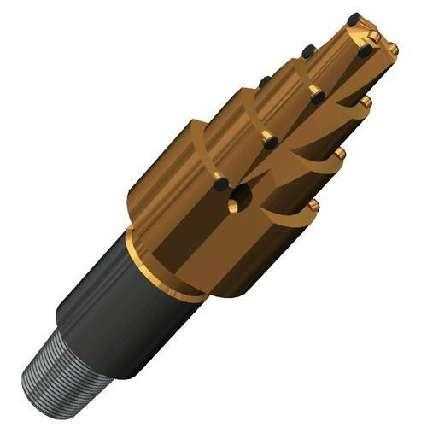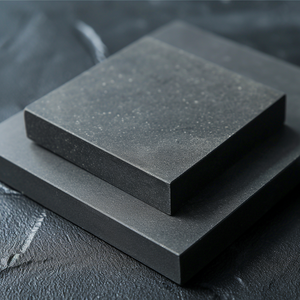Discover Premium Ceramic Products | Durability & Elegance United | Advanced Ceramics
1. Introduction
Just 24 hours ago, a major foundry in Ohio reported a production delay due to unexpected cracking in their silicon carbide crucibles during high-temperature aluminum melting—a reminder that even robust industrial ceramics require proper handling. If you’re working with a silicon carbide crucible in metallurgy, lab research, or artisanal casting, you’ve likely faced similar frustrations. The good news? Most issues are preventable or fixable with the right techniques.

In this guide, we’ll walk you through five common problems users encounter with silicon carbide crucibles and provide clear, practical solutions. Whether you’re comparing boron carbide vs silicon carbide for your next project or wondering how silicon nitride crucible factory specs differ, this article has you covered.
2. Problem 1: Thermal Shock Cracking
Silicon carbide crucibles are prized for high thermal conductivity, but rapid temperature changes can still cause cracks. This is especially common when cold crucibles are plunged into hot furnaces or when molten metal is poured too quickly.
Solution: Always preheat your silicon carbide crucible gradually. Start at 200°C (392°F) for 30 minutes, then increase in 200°C increments until you reach your target temperature. Avoid direct flame impingement and never place a hot crucible on a cold surface.
3. Problem 2: Metal Contamination
Impurities from the crucible can leach into your melt, especially when processing reactive metals like titanium or aluminum alloys. This often stems from using low-grade silicon carbide or reusing crucibles beyond their lifespan.

Solution: Use high-purity silicon carbide crucibles designed for your specific metal. Replace crucibles after 15–20 melts or if you notice surface pitting. For ultra-sensitive applications, consider a silicon nitride crucible—offered by specialized silicon nitride crucible factory suppliers—as it offers superior chemical inertness.
4. Problem 3: Uneven Heating or Hot Spots
Poor furnace design or incorrect crucible placement can create hot spots, leading to inconsistent melting or localized wear. This is often mistaken for a defect in the silicon carbide itself.
Solution: Ensure your crucible sits centered in the furnace with even airflow. Use silicon carbide ceramic columns or silicon carbide brick lining to reflect and distribute heat uniformly. Also, verify that your silicon carbide burner nozzles are clean and properly aligned.
5. Problem 4: Difficulty Removing Solidified Material

After cooling, metal or slag can fuse tightly to the crucible interior, making cleanup difficult and risking damage during scraping.
Solution: Apply a thin, high-temperature release coating (like boron nitride spray) before each use. After pouring, allow the crucible to cool slowly inside the furnace to reduce adhesion. Never use metal tools—opt for ceramic or graphite scrapers instead.
6. Problem 5: Confusion with Similar Ceramics
Many users mistakenly treat all advanced ceramics the same. For example, boron carbide vs silicon carbide involves trade-offs: boron carbide is harder but more brittle and expensive, while silicon carbide offers better thermal shock resistance. Similarly, silicon nitride ceramic components—like a custom silicon nitride heat shield or silicon nitride ring—are better for extreme thermal cycling but cost more.
Solution: Match the material to your application. Use silicon carbide crucibles for general high-temp melting up to 1650°C. For repeated rapid heating/cooling cycles, explore silicon nitride options. And don’t confuse industrial items like rbsic silicon carbide tile blocks or silicon carbide ceramic tubes with dinnerware—yes, there’s even a growing market for silicon carbide ceramic dinner plates and silicon carbide baking ceramic dishes, but those are formulated differently and not for lab or foundry use!
7. Bonus Tip: Storage and Handling
Store your silicon carbide crucible in a dry, dust-free environment. Moisture absorption can cause steam explosions during heating. Always handle with clean gloves to avoid oil contamination, which can degrade performance over time.
8. Conclusion
A silicon carbide crucible is a powerful tool—but only if used correctly. By avoiding thermal shock, preventing contamination, ensuring even heating, easing cleanup, and understanding how it differs from alternatives like silicon nitride or boron carbide, you’ll extend its life and improve your results. Whether you’re melting metal or exploring high-temp ceramics like silicon carbide ceramic serving bowls or silicon carbide thermocouple protection tubes, respect the material’s limits and strengths.
Our Website founded on October 17, 2012, is a high-tech enterprise committed to the research and development, production, processing, sales and technical services of ceramic relative materials such as 5. Our products includes but not limited to Boron Carbide Ceramic Products, Boron Nitride Ceramic Products, Silicon Carbide Ceramic Products, Silicon Nitride Ceramic Products, Zirconium Dioxide Ceramic Products, etc. If you are interested, please feel free to contact us.
